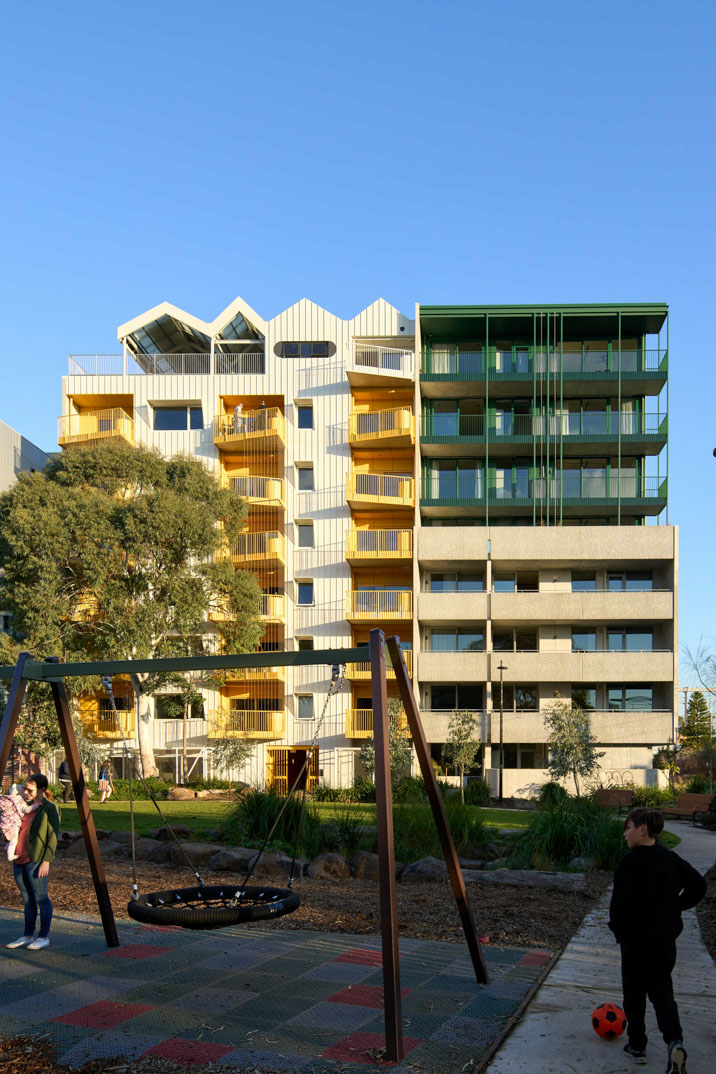Coinciding with its 40th year, Hayball has partnered with the Australian Social Value Bank (ASVB) in an attempt to measure and quantify the social value of its projects.
An industry first, the partnership hopes to establish a measurement framework that enables architecture firms to be able to demonstrate and evaluate the impact of design on people and communities. The practice’s Nightingale Village project, namely the CRT+YRD building, will be the first project measured by the framework.
The Federal Government’s Measuring What Matters whitepaper indicates that wellbeing is a priority of national importance. Hayball believes that the creation of a tool that is able to measure the social value of a project will only help the built environment in doing its bit in boosting collective wellbeing nationwide.
“The longer-term impact that the built environment has on people’s lives is fundamental to understanding the success of our places and projects,” says Hayball Co-Managing Principal Sarah Buckeridge.
“Our ultimate goal with this study is to have a framework and measurement tool that can be utilised across sectors for comparison and engagement with our peers in the Australian architecture and design industry. We hope that the pilot study of CRT+YRD in the Nightingale Village will start a meaningful conversation around measuring social value.”
The pilot study will leverage post-occupancy data of CRT+YRD’s residents to determine whether the project achieved a set of design outcomes that attempted to enhance the wellbeing of residents. This includes community engagement, feeling of safety and adaptability of housing. ABSB Executive Officer Min Seto says the partnership has the ability to completely alter the way buildings are designed.
“The ASVB is the largest bank of methodologically consistent and robust social values ever produced in Australia. Using Australian datasets, we’ve successfully been able to put a well-researched economic value on the improvements in the wellbeing of Australians created by different social outcomes,” she says.

“It’s exciting to see the measurement of social value progressing within Architecture in Australia; it will mean that impacts on the wellbeing of people and the planet will be considered from the very beginning of projects, in the design phase.
“The pilot study of CRT+YRD will allow us to understand the social value that can be created through architecture and design based on evidence, rather than a gut feeling. Understanding that the built environment plays a significant role in the wellbeing of communities, this partnership will pave the way for a useful framework to improve our spaces and places for society.”
Hayball has seen a 250 percent increase in social infrastructure since 2012. It believes the new framework will assist in crafting outstanding design outcomes well into the future.
“The social value of design relies on the level of wellbeing produced as a result – this can be through designing healthier, more active and safer communities as well as consideration of ethical procurement of supply chains and embedded resilient and environmentally sustainable practices,” says Hayball Co-Managing Principal Tom Jordan.
“Furthering this research in Australia directly correlates to our vision to create socially and sustainably responsive design for our users.”
The results of the ASVB Nightingale Village pilot study were released in June 2023.

